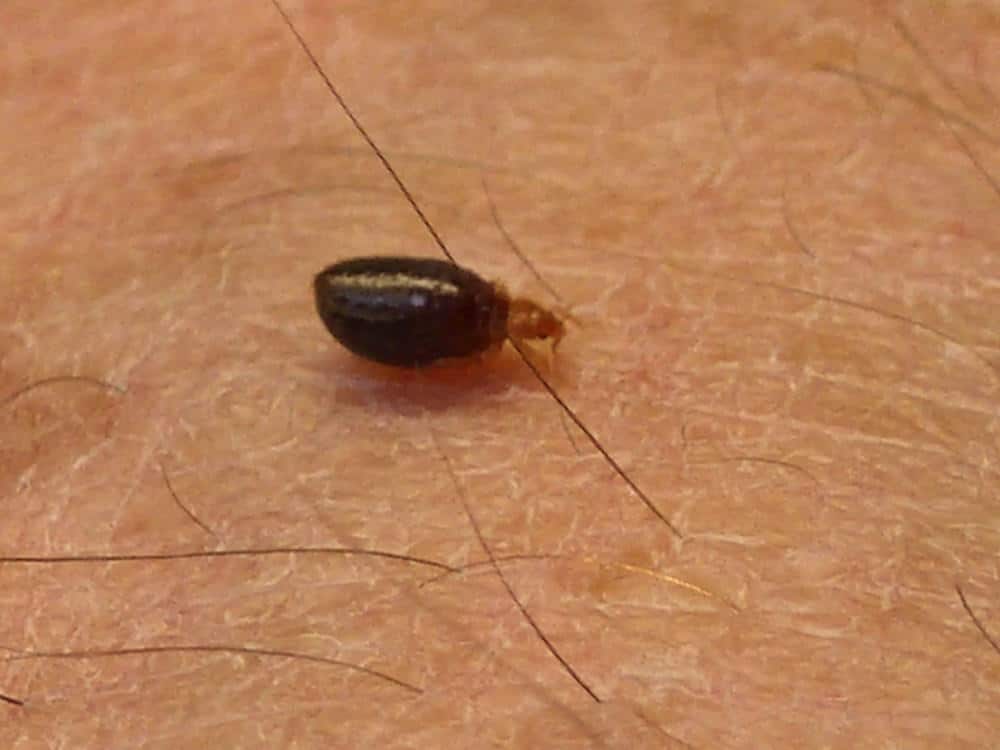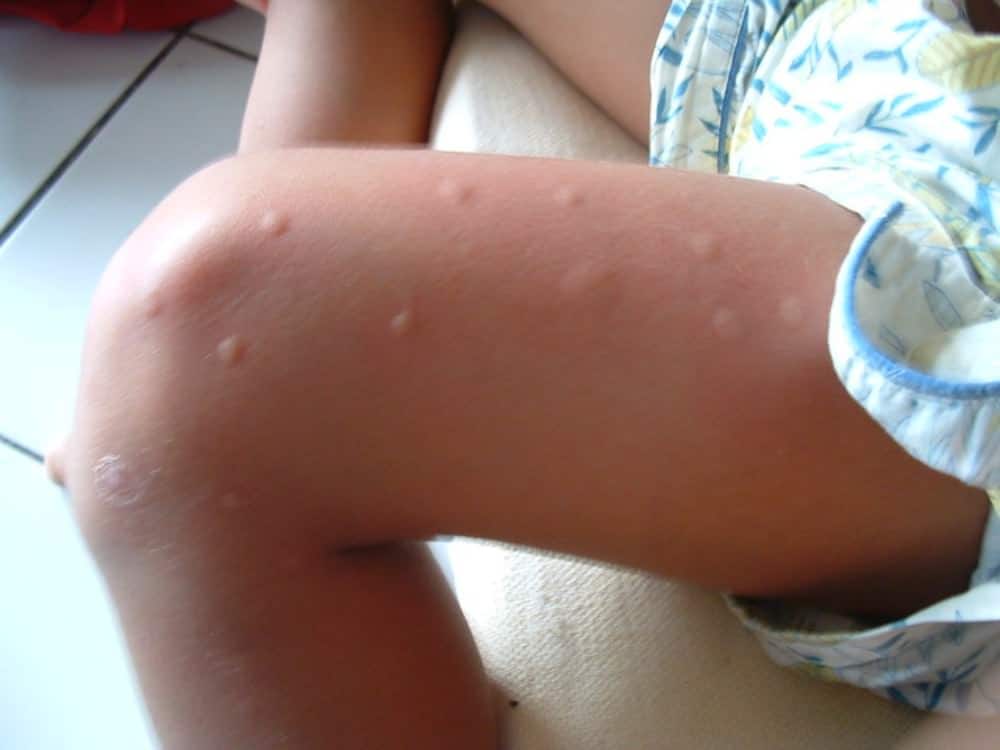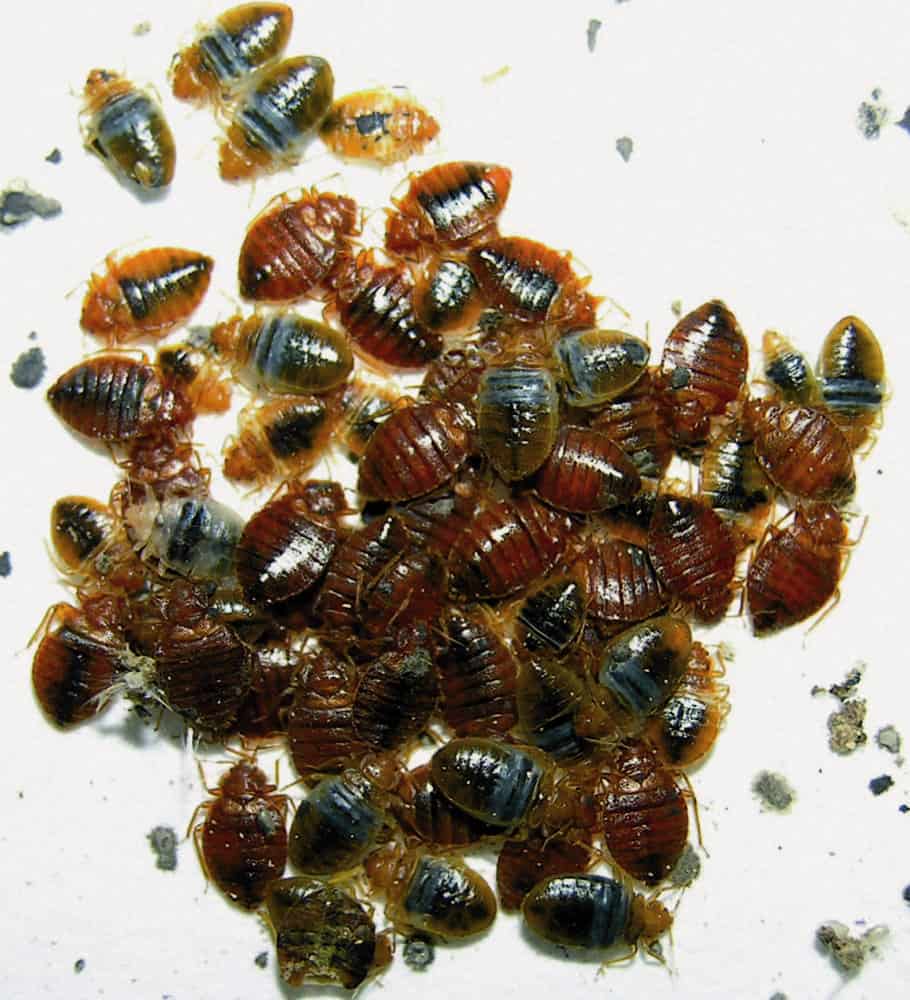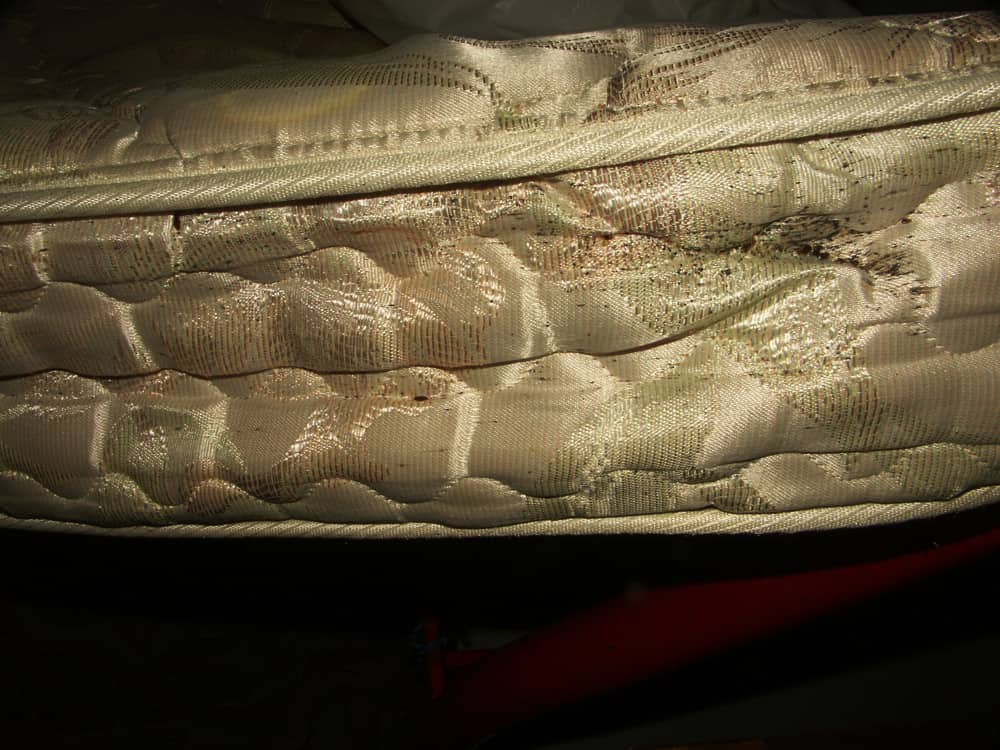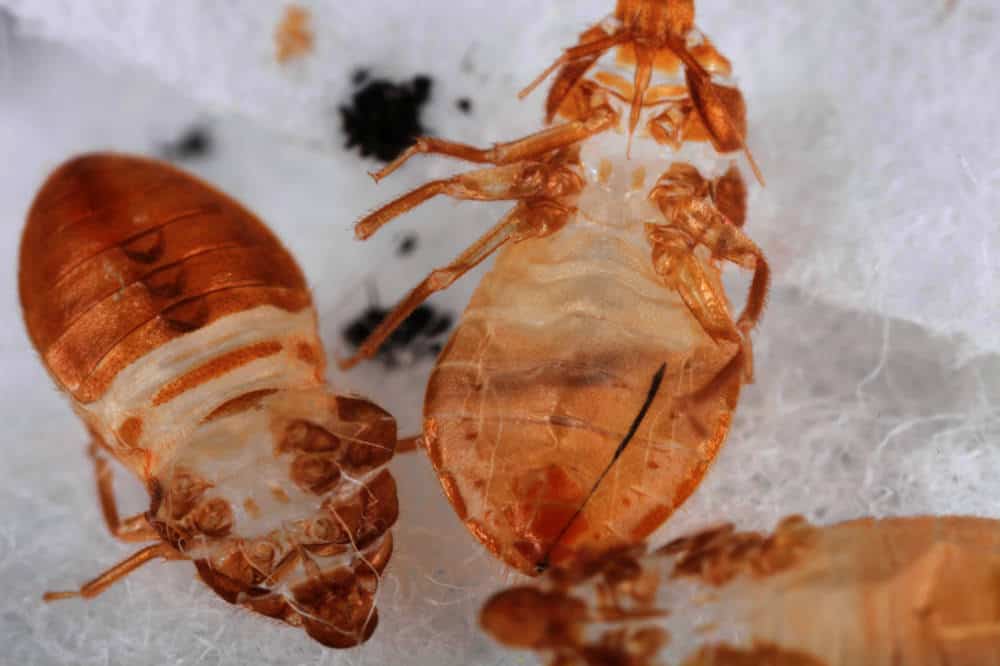Bed Bug Life Cycle: All Stages and Sizes
Bed bugs, like most insects, have a complex life cycle with multiple stages. They begin their lives in an immature form and physically change in appearance and size as they grow. The life cycle of a bed bug is longer than most other parasites, which allows them to reproduce at alarming rates and in great volumes.
Understanding how these pests grow and produce offspring, can give us valuable insight into how severe an infestation is and how far along it is.
What Is The Bed Bug Life Cycle?
As previously mentioned, the life cycle of a bed bug is similar to most insects, (and arthropods in general for that matter). They begin life as an egg laid by a female and grow to adults by passing through distinct life stages. During each of these life stages, their appearance and behavior change slightly until they reach adulthood.
Unlike mammals, birds, and even some species of reptiles, amphibians, fish and invertebrates, bed bugs do not care for their offspring once the eggs have been lain. Their life cycle does not include a nurturing phase, forcing the bug to be independent from birth. This lack of care increases the bed bugs’ mortality rate but allows for a single female to create a vast number of offspring relatively quickly.
A bed bug will hatch from its egg as a nymph. A nymph is an immature insect that closely resembles the adult form of its species. The nymph gradually undergoes a metamorphosis into its adult form by molting its exoskeleton.
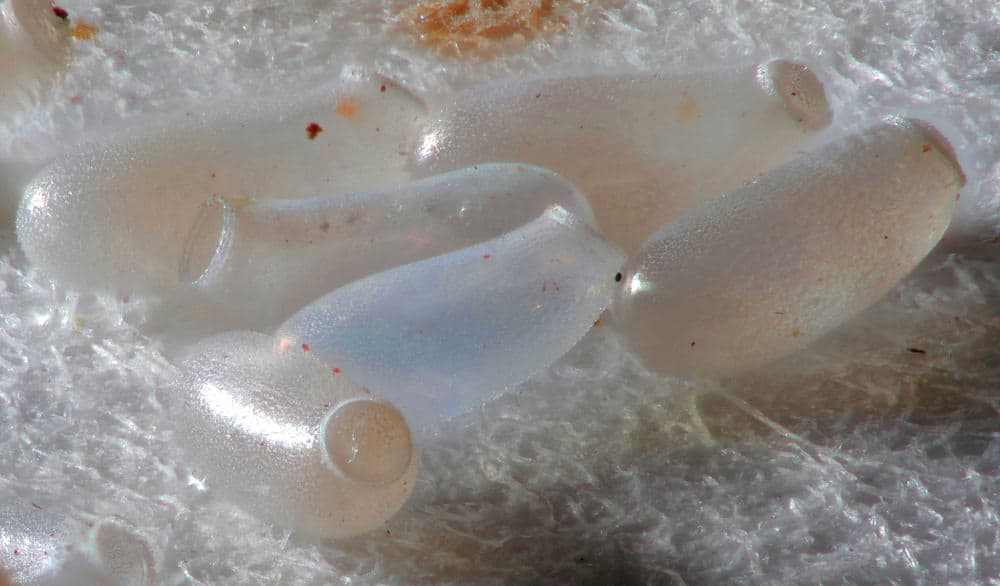
In order for a nymph to shed its exoskeleton successfully, it must increase in size by ‘having a meal.’ Bed bugs feed predominantly on warm blood from humans and other mammals such as household pets. It can take up to 10 minutes for a bed bug to feed on you or its desired victim, until it changes color from translucent/ pale yellow to red or brown and grows significantly bigger.
A baby bed bug, also known as an instar, can feed on blood immediately. The sooner they discover a food source, the faster they can ‘eat’ and crucially reach their next stage of life. The nymph must go through five molts before reaching adulthood, growing larger with every shedding of the exoskeleton. Each stage lasts approximately a week.
Instars may be smaller but are no less dangerous than an adult. However, they cannot reproduce until (relatively) much later in their lives, as similar with human children. They go through a younger version of adults until they reach an age at which they can reproduce.
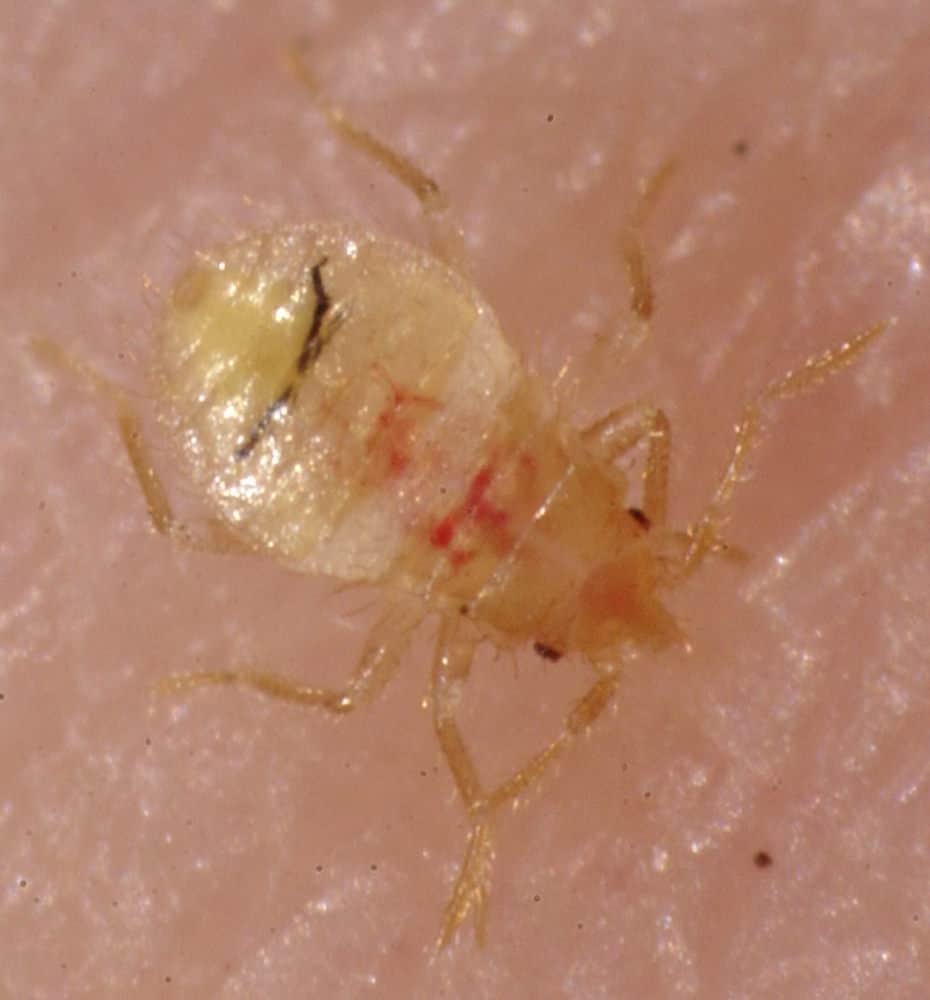
The adult stage of the bed bug is the longest, just like with mammals. Unlike butterflies or moths that are sexually active for brief periods of time, bed bugs continue to mate and produce offspring for the majority of their lifespan. The eggs laid by the female hatch, and the cycle begins again.
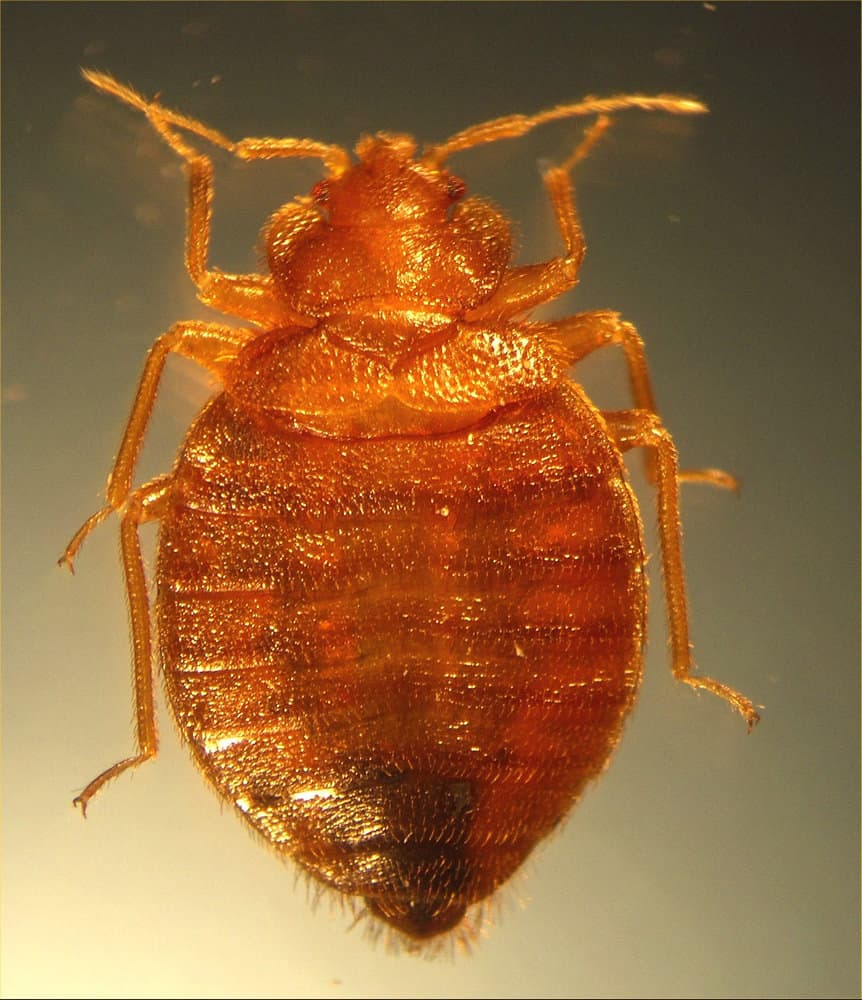
What Are Bed Bug Life Cycle Stages?
The insect world is enormous and varied in its species. Insects have their unique life cycles and stages within that cycle. The bed bug has seven distinct stages in its life.
- Egg Stage: The bed bug begins its life as an egg. As with many parts of the bed bugs life cycle, the length of the egg stage is dependent upon room temperature. At temperatures greater than 70˚ F, eggs can hatch in as little as six days. Over 90 percent of bed bug eggs will hatch by the nine-day mark, but this time significantly increases if the temperature falls below 50˚ F.
- 1st Stage Nymph: Upon hatching, the bed bug is in its first nymph stage. At this stage, the nymph is about 1.5 mm long but will expand after feeding and swell up to nearly double in size. It will have to complete at least one full blood feeding to advance to the next stage, which it does by molting its exoskeleton.
- 2nd Stage Nymph: This stage is similar to the first, but once the nymph has shed its “skin” it is slightly larger. It will now be about 2 mm long. Once the second stage nymph has completed at least one more full blood feeding, it can again molt its exoskeleton and advance to the next stage.
- 3rd Stage Nymph: Other than its size, this nymph is mostly the same as the one from the previous stage. It has now grown to 2.5 mm in length. It must again complete a full blood meal before once again molting. Bed bugs need only 5-10 minutes to complete a feeding, at which point they retreat to a shelter.
- 4th Stage Nymph: The bed bug nymph continues to grow in length, now at 3 mm wide. As with all other nymph stages, a full blood meal is required to shed its exoskeleton once again. Despite its increased size, it can still feed quickly, thanks to its enlarged mouthparts.
- 5th Stage Nymph: This is the bed bug’s “teenager” stage. It has assumed a shape that varies only in size from its adult counterpart. The nymph will measure about 4.5 mm. One final molting will occur before the last distinct life cycle stage.
- Adult Bed Bug: After the last molting, the bed bug is now sexually mature. It will be around 4.5 mm long, with females growing noticeably bulkier than the males. At this stage, males can now inseminate females, and females can lay eggs if they have mated.
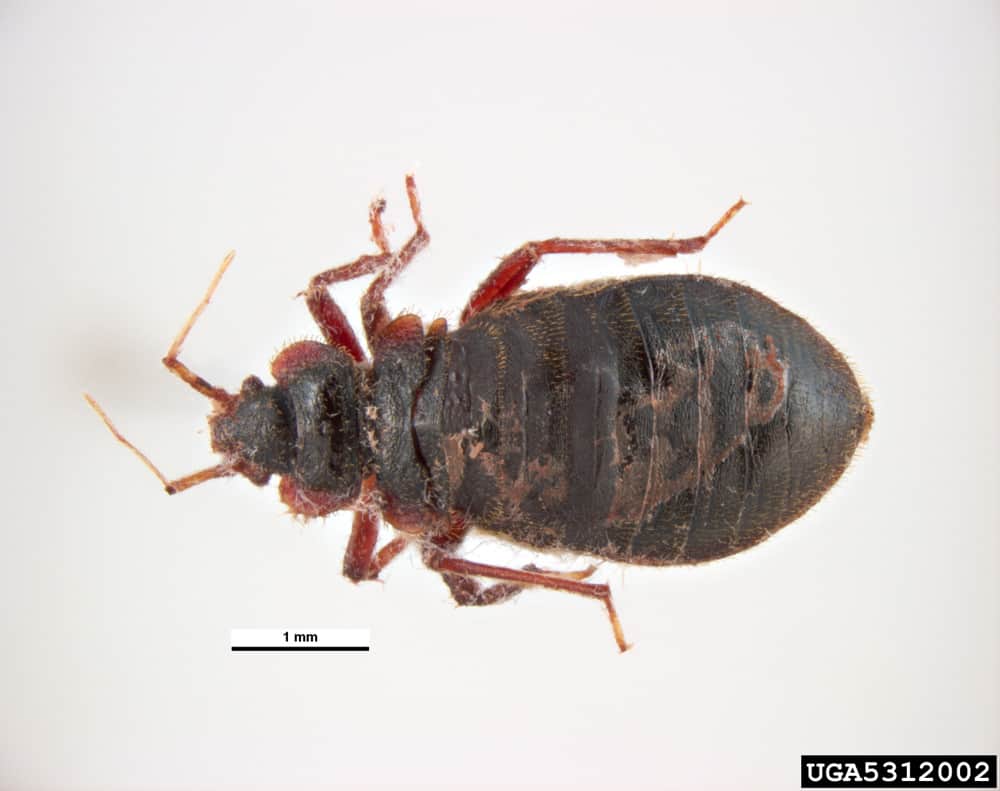
What Do Bed Bugs Look Like Throughout The Stages?
At each stage of the bed bug life cycle, the insect’s appearance is distinct and differentiated from the other stages. Close inspection can reveal what stage the bug is at in its lifespan.
- Egg: The egg is cylindrical and white to translucent, with a couple of reddish eyespots developing later. The egg is about the size of a pinhead and may resemble grains of salt from far away. The female can lay eggs together in a group or separately.
- Nymph Stage 1: The nymph is yellowish yet translucent, meaning it can be nearly impossible to spot. However, if the nymph has fed on blood, which it can do more or less immediately after hatching, it will appear dark red or brown on its abdomen because the blood is showing through their translucent exoskeleton. The nymph will have the standard three legs and two antennae that insects have.
- Nymph Stage 2: This nymph closely resembles the previous stage, and its translucent coloring will remain mostly unchanged. Unless it has fed, of course. The only significant change in appearance is its size.
- Nymph Stage 3: At this stage, the nymph has taken on a permanent coloration. It still may be slightly translucent, but it is a darker yellowish hue that makes it easier to spot.
- Nymph Stage 4: At this stage, the nymph will begin to resemble an adult. Its narrow abdomen has started to widen to accommodate more blood. Its head will also begin to flatten and widen out.
- Nymph Stage 5: At this point, the nymph has begun to take on the hairy head and brownish hue that bed bugs are known for, no longer appearing translucent. It has grown a larger neck and a broader body.
- Adult Stage: This is the stage that is most common and is the point when the bug takes on its most recognizable appearance. It is brownish red, with a wide and hairy abdomen and neck. Its body is now permanently colored, regardless of whether or not it has fed. Most-important, you can see adult bed bugs relatively easy if they’re crawling on something light in color.
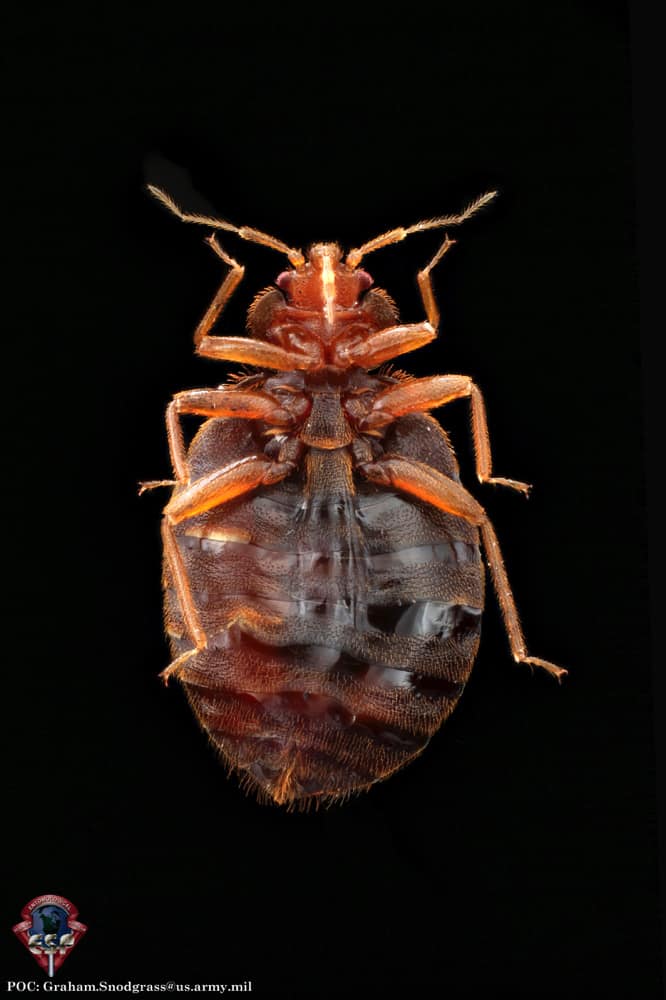
How Do Bed Bugs Reproduce?
Bed bugs mate through an appropriately named procedure called “traumatic insemination.” The male bed bug, instead of going through the female’s sex organs, inserts its hypodermic penis into the abdomen of the female and ejaculates sperm into her body cavity.
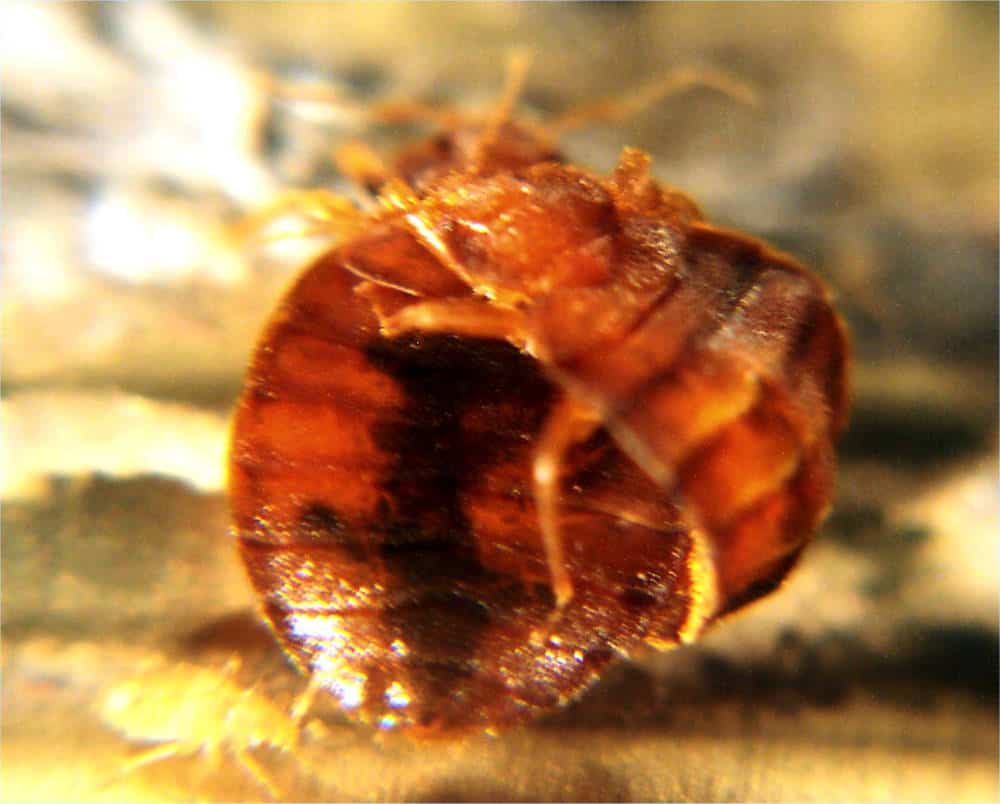
The sperm makes its way to the eggs within the female eventually, at which point the female is ready to lay fertilized eggs. She will arrange them together in a small group or simply lay them as she moves about her business.
As the action is so traumatic, females require an extended recovery period before they can mate again. Each subsequent mating produces fewer eggs because the damage caused by mating never truly heals. Despite this, females can mate several times over the course of their lives.
Unfortunately for humans, bed bugs are mostly unaffected by inbreeding and incest. A female can mate with her male offspring and vice versa with virtually no complications. This resistance means that a single fertilized female can cause an entire infestation all on her own.
How Many Eggs Do Bed Bugs Lay?
A female bed bug can lay 1-7 eggs a day for ten days after feeding. She can produce 5-20 eggs after one full meal. She is dependent upon sperm, however, and must mate again if she runs out. She can do this several times in her lifespan.
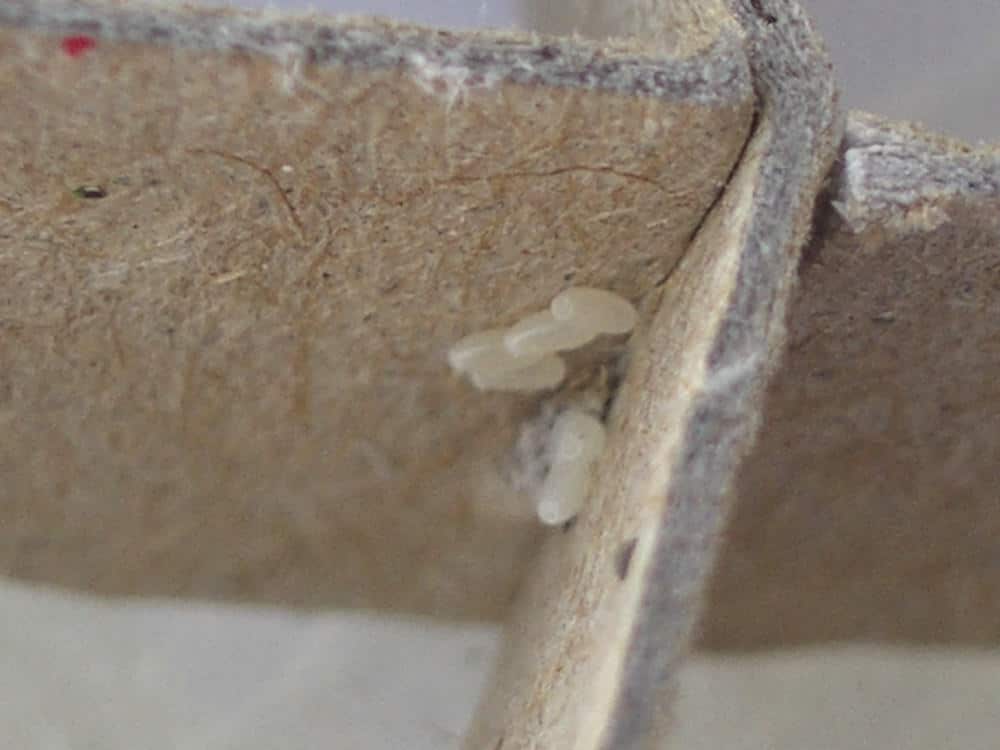
Over the course of her entire life, a female bed bug can lay over 100 eggs. The eggs are split more or less down the middle by gender, meaning there are just as many females as there are males. Since these offspring can mate with each other with little consequences, each female can lay 100 eggs of her own and the females she creates can do the same and so on, causing exponential growth in population.
Bed bugs enjoy a high success rate when it comes to eggs. Under the right temperature conditions, around 97% of the eggs will hatch. Higher temperatures and increased humidity positively affect the hatch rate as well as the lifespan and health of the bugs overall.
Where Do Bed Bugs Lay Their Eggs?
Bed bugs lay their eggs in and around the same area where they live. The female may even lay eggs as she moves from one place to another; leaving eggs on carpets and bedsheets, exposed and in the open. Most often, though, she will lay them in her shelter.
Bed bugs are nocturnal, hiding during the daylight hours to avoid being killed. They find shelter in the seams of mattresses, or in other creases and folds in fabrics. These enclosed spaces raise the ambient temperature and humidity, creating a favorable micro-climate. That is where most eggs can be found. Wherever bed bugs hide, the eggs will not be far.
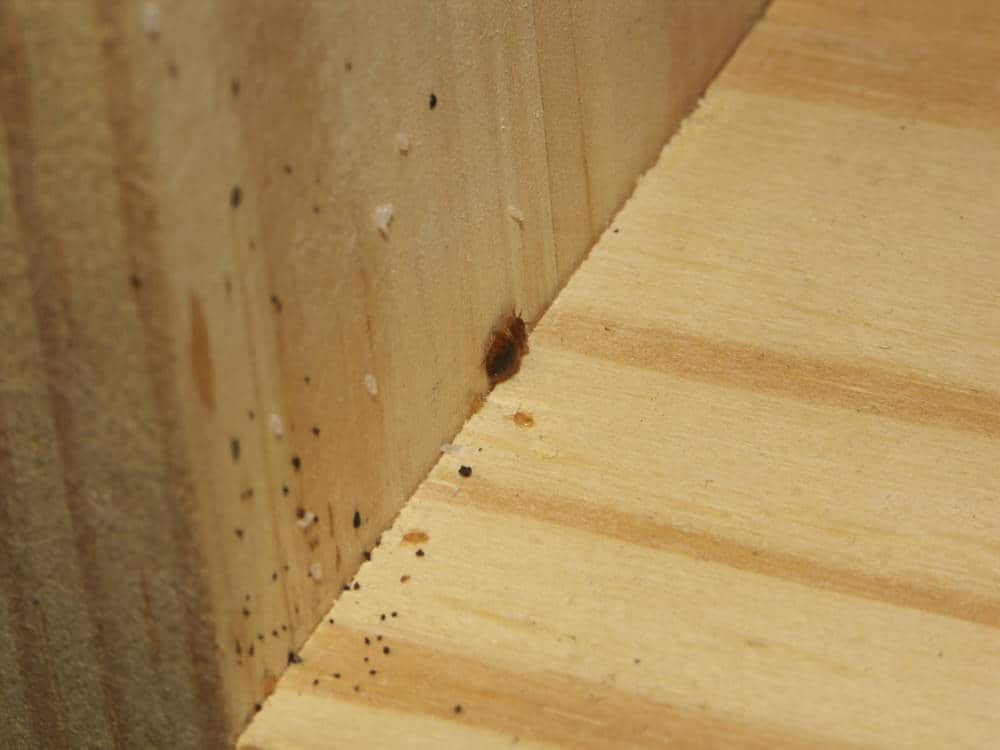
Bed bugs do not live in hair on the human body, so this isn’t something you need to worry about.
How Long Do Bed Bugs Live?
The length of a bed bug’s life is largely dependent on its access to food and the temperature and humidity of its environment. As stated above, higher temperatures in excess of 70˚ F and high humidity will help them to produce more offspring. These higher temperatures will increase bed bug activity, but won’t necessarily prolong their lives. Temperatures over 100˚ F prove to be too hot and cause lower life expectancy and fertility.
Bed Bugs collect moisture through their food and by breathing it in through their skin. More moisture in the air means more for them to drink. Colder temperatures and drier climates have an adverse effect on bed bug activity, but it also makes them live longer. Since they spend most of their time resting, their lives grow longer.
Since each nymph stage lasts about a week, an egg can reach maturity in about 37 days. From there, the bed bug can live in its adult stage for up to a year before it dies of old age. Depending on conditions and availability of food, a bed bug can live for anywhere from six months up to slightly over a year.
The upper limit of a year lifespan has only been observed in a laboratory. We can reasonably assume that bed bugs in “the wild” have drastically reduced lifespans stemming from human actions, chemicals, non-optimal conditions and food scarcity. Without action, however, bed bugs will continue to reproduce and persist. Bed bugs are likely to live at least a few months in non-laboratory conditions; more than long enough to reach sexual maturity.
Summary
Bed bugs have quite a long life cycle and lifespan in comparison to similar blood-sucking parasites. This prolonged life makes them especially difficult to eradicate completely. It takes a bed bug around five weeks to go through each of its baby to adolescent nymph stages and reach sexual maturity. Once it is an adult, however, it can continue to reproduce, even through incest, for months. Their highly evolved physiology makes them a threat not to be taken lightly.

